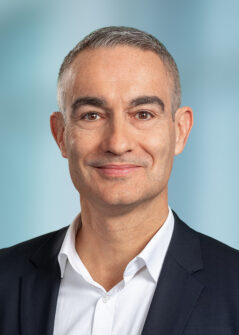Building a digital twin requires many different disparate software and hardware data inputs. Nemetschek is looking to bring an open data approach to an increasingly proprietary digital twin market, writes Martyn Day
Industry interest in digital twins continues to gather pace. While post-build workflows, involving the com bination of BIM, GIS, service information, asset logs and live sensors have yet to gain serious mainstream traction, products are maturing as the market gets educated on their potential benefits.
We are seeing new players joining the market. Nemetschek, the German-based AEC/O software house, which owns brands such as Graphisoft, Vectorworks, Allplan, dRofus and Bluebeam, is aiming to make a major play in the digital twin segment, with products to help manage the lifecycle of built assets.
The company is unique in the BIM market, in that it owns three separate BIM modellers. Not only that, but it’s an umbrella for some 13 subcompanies, which each operate independently and address a very broad range of needs. To name but a few, these include real estate management, construction management, document generation and management, structural analysis tools and rendering engines.
In short, Nemetschek has always dipped its fingers into all aspects of the digital AEC/O ecosystem. So digital twins represent a natural next step, especially given that between them, its company brands already own some important component technology.
As proof of its commitment to this new opportunity, the company this year hired industry veteran Cesar Flores Rodriguez as its chief division officer (CDO) for Operate & Manage and digital twin — a role that involves him wearing ‘multiple hats’. Rodriguez takes on responsibilities previously shouldered by Viktor Varkonyi, who recently left the company after 20 years.
At the recent Graphisoft Building Together event in Budapest, AEC Magazine caught up with Rodriguez and Graphisoft CEO Huw Roberts to talk about digital twins, the Nemetschek Group’s approach and what they believe the company’s ’special sauce’ will bring to this market.
Find this article plus many more in the September / October 2023 Edition of AEC Magazine
👉 Subscribe FREE here 👈
Twin development
From speaking with firms currently trying to sell digital twins over more traditional computer aided facilities management (CAFM) solutions, it seems like it’s hard work right now to find buyers or architects who want to expand their client services by leveraging the BIM data they create.
As Rodriguez explained, “A year before I joined Nemetschek I was already a consultant for the company. Digital twins was an area I was evaluating and I had exactly the same questions. Digital twins are not suited to serve every single segment within the AEC/O space. That’s just not realistic.”
As with any new piece of software, he continued, it’s a question of identifying the right segment, starting with owners and operators. “Within these, we pick the ones that are really asset-intensive. Long-term owners and operators of buildings, hospitals, airports and universities all do their own extensions. They all have their own kind of business motivations. Here, a digital twin makes perfect sense. That’s where we believe we need to start,” he told us.

“We have conducted lots of interviews around the industry, including with architects and engineers. All of them were looking for new kinds of services to offer, along the whole lifecycle, and not only focusing on the design phase, for example, but going beyond it.”
Surveying the market today — and in particular, observing Autodesk rapidly develop its Tandem offering — it’s interesting to see a company build off its proprietary BIM file, in Autodesk’s case, RVT, in order to cater to AEC/Os. Support for open standards like IFC (Industry Foundation Classes) were not an early consideration. But BIM is only part of the data contained in a digital twin.
“Nemetschek overall, as a group, is focussed on openness and this applies to our vision for digital twins. We are going to enable digital twin creation in an open and completely neutral way,” explained Rodriguez. “That means even for Revit data, and any other format can be stored in our app or referenced. The data really is in the possession of the actual owner of the data, wherever it may be — whether it’s the building owner, the architect, we don’t care. And it can be downloaded locally, whatever the customer wants to do with it. I think that’s important. And it’s not caught up in a proprietary environment.”
CEO Huw Roberts added that openness is central to the company’s value proposition — and not just because that’s the opposite of what its competition is doing. “We don’t want to have our value tied to being a ‘data holder’. We want to provide workflows, tools and capabilities to use that data,” he said.
“As to adoption, it’s about educating our industry. But that has been the truth on many, many occasions already before, from paper to 2D drawings, from drawings to BIM. It’s an education. We are not the fastest moving industry in terms of digitalisation. As software providers, we need to help the industry to solve or mitigate its current pains, and it’s about how we can help companies to create more business and increase their proportion of the value chain.”
An owner/operator focus
Having such a diverse portfolio of software firms, which all participate in the creation and use of building data, Nemetschek has some insight into which customers are keen on developing digital twins. From the company’s perspective, the important early adopters are owner/operators. “While we have architects, engineers and contractors, we also have owner/operator customers and there’s a bit of difference maybe to the other twin developers,” Rodriguez told us. Here, Nemetschek offers the Spacewell platform for FM/energy and asset management software, and also products from property/real estate management company, Crem.
“Are we as broad in our access to operators as Bentley Systems? No. But do we have access, and do we understand them? Yes! And we know how to find them, which is the most important thing. From speaking with them, we believe that we understand their pains,” he explained.
Through its broad range of AEC/O acquisitions, Nemetschek already has a lot of the technology for creating the ‘golden thread’ of building lifecycle applications
One reference case is the Glasbokkene Trinn 2, a large 50,000 square metre hospital for children and teenagers, based in Bergen, Norway. “This is how this whole digital twin project came into life at Nemetschek, where this owner/operator was pushing the whole value chain to establish a digital twin, a golden thread of information, across the whole lifecycle, from very early on,” said Rodriguez. “That meant that the people who were taking care of facility management at the very end had to approve every single document, to guarantee they could operate, based on the information created and provided in the design and build phases.”
Here, Huw Roberts picked up on the company’s approach, “Fundamentally, we don’t see digital twin as ‘more features for BIM’. I think our competitors do. Bentley’s place with digital twins is building off their modelling platform data. Again, with Autodesk Revit and Forma, the approach is building off their own data and their ownership of that data,” he said.
While BIM data is a key contributor, he added, “so is photogrammetry, point clouds, sensor data, inspection data, spreadsheets, cost databases, user requirements, documentation, etcetera. This knowledge is the key to entry into the digital twin commercial space.”
Going to market
With such a new market segment and a fair degree of complexity in producing a digital twin from multiple sources, we asked Rodriguez if Nemetschek’s approach to the market would be more services-based or by going through traditional resellers.
“We are a software vendor, so that’s what we are going to deliver. The big job is building up the ecosystem surrounding it. So that’s service providers, consultants, data capture companies, and so forth, and we’re already very close to these. We are already writing, signing cooperation contracts with many of these, so that they can build their services on top of our software platform,” he said.
“We’re also talking also to architectural companies, as they have been asked to support hospitals, airports etcetera, and we need to know how to help them in the future, because there’s always massive extension programmes running. There are certain areas that we have done and that they would like to have our advice upon. They’re all into it. They would like to position that kind of service as part of the overall portfolio to the owner.”

With its commitment to open file formats, we were wondering how Nemetschek was handling using a wrapper to hold all of a digital twin’s data. Rodriguez explained, “We’re not going to create any sort of ‘extra level’ of a file. The idea is really about the deep digital twin brain, where we connect all the dots together.”
Take, for example, all of the BIM modelling data, point clouds, images and so on that feed a digital twin. According to Rodriguez, all of this is overlaid and combined through GIS coordinate positioning. “We can really combine the data without adding additional proprietary problems, and it can be stored, like an extra file that is related to the digital twin. You can create reports from it, or use the built-in user customisable dashboards, alongside any sort of analysis tool.”
Roberts added, “We recognise that the software that is creating the data, acting on the data, is going to be permanent change. Every one of those many data sources is going to be having new versions, new updates, new enhancements, all the time. When a customer comes back to act on that data, in a more robust way than digital twin use, who knows if that is a year from now or five years from now? We don’t want, on the one hand, to lock in that data to a new format of our own. On the other hand, we don’t want to restrict users of that data from adapting their own technology choices along the way, over time, either. It’s not just that the data is not locked in. The tools that you’re using are not locked in either.”
Through its broad range of AEC/O acquisitions, Nemetschek already has a lot of the technology for creating the ‘golden thread’ of building lifecycle applications. By encouraging cross-brand technology sharing, the company has created a blueprint for an evolving, open digital twin platform.
The company’s approach to handling the collation of data appears unique and worthy of further investigation. The software is currently being used to monitor Nemetschek’s own headquarters in Bavaria, which has been twinned, wired up and ‘dashboarded’ for further development.
We plan to bring you more in-depth analysis of the software’s capabilities in coming issues.
Main image: Digital twin of Glasbokkene Trinn 2, a large 50,000 square metre hospital for children and teenagers, based in Bergen, Norway






